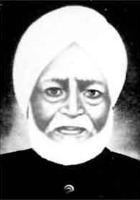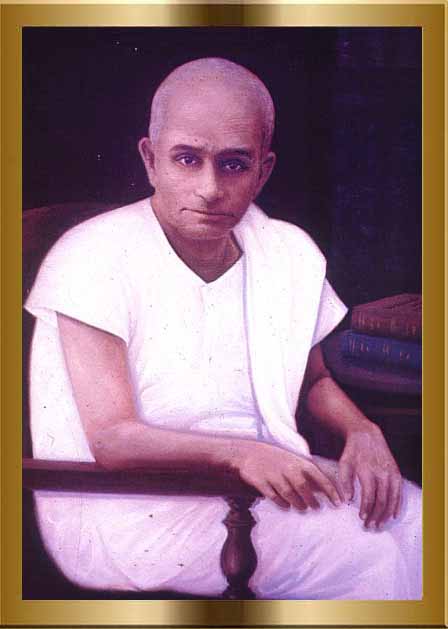Over the years (2012,2013, 2014, 2015, 2016, 2017, 2018) Pothi.com has compiled a list of Indian authors whose work has entered public domain at the beginning of this year. The criteria for this year’s names is that the author died in the calendar year 1958 and the work was published before his death. In case the work was published after the author’s death, it will only come out of copyright after 60 years from the date of publication.
We have collected the data from various sources including Wikipedia and other online sources, some which we will be linking here. The information provided is not foolproof, so if you notice any errors or are aware of other writers who died in 1958 and whose names have not been mentioned here, please let us know.
When an author enters public domain, it means that most of his works are now free to be republished, translated, and converted to different formats. This way the long-gone author breathes life again and gains new readership. Help us in our quest to conserve our rich literary culture.
Bhamidipati Kameswara Rao (1897-1958)
He was an exponent of Telugu comedy drama, an educationist and genius, also christened ‘Hasya Brahma’. His humorous plays were inspired by French writer Moliere, many of whose plays he adapted into Telugu, and Gurajada Appa Rao’s works, whose use of spoken regional dialect made a mark on him. He also wrote original prahasanas. His works have been compiled in Bhamidipati Kameswararao Rachanalu-Vols.1 and 2.Other works includeThyagaraja Atmavicaram and Bataa khani. According to his biographer Patanjali Sastry, “Though he wrote comedies, he remained an introvert and never smiled even when some one cracked a joke.” informs Patanjali Sastry. Bhamidipati was greatly influenced by Gurajada Appa Rao’s works, especially for its modernity and use of spoken regional dialect.
Sir Jadunath Sarkar CIE (1870 – 1958)
 He was a prominent Indian Bengali historian who specialized particularly in the life and times of Aurangazeb. He was also the Vice Chancellor of Calcutta University. He was honored by Britain with a Companion of the Order of the Indian Empire CIE and knighted in 1929. Published works by Sarkar include The India of Aurangzib (1901). His five-volume History of Aurangzib was a labour of ove that lasted twenty-five years. It took another twenty-five years to finish his four-volume Fall of the Mughal Empire in 1950. His single-volume works include Chaitanya: His Pilgrimages and Teachings (1913) and Shivaji and His Times (1919).
He was a prominent Indian Bengali historian who specialized particularly in the life and times of Aurangazeb. He was also the Vice Chancellor of Calcutta University. He was honored by Britain with a Companion of the Order of the Indian Empire CIE and knighted in 1929. Published works by Sarkar include The India of Aurangzib (1901). His five-volume History of Aurangzib was a labour of ove that lasted twenty-five years. It took another twenty-five years to finish his four-volume Fall of the Mughal Empire in 1950. His single-volume works include Chaitanya: His Pilgrimages and Teachings (1913) and Shivaji and His Times (1919).
Mafizuddin Ahmed Hazarika (1870-1958)
 He was a prominent poet belonged to the Jonaki era of Assamese Literature. He was popularly known as ‘Jnan Malinir Kobi’ among the people of Assam. He’s been called a ‘symbol of national integration’ and a person with great secular thoughts. Some of his poetic works include Jnan Malini and Totwo Parijaat.
He was a prominent poet belonged to the Jonaki era of Assamese Literature. He was popularly known as ‘Jnan Malinir Kobi’ among the people of Assam. He’s been called a ‘symbol of national integration’ and a person with great secular thoughts. Some of his poetic works include Jnan Malini and Totwo Parijaat.
 Taraknath Das (1884 –1958)
Taraknath Das (1884 –1958)
He was an anti-British Bengali Indian revolutionary and internationalist scholar. He discussed his plans with none less than Tolstoy. He was a professor of political science at Columbia University and a visiting faculty in several other universities. He founded the Indian Independence League. He set out for Japan with the project of a vast study on Japanese Expansion and its significance in World Politics which appeared as a book in 1917 with the title, Is Japan a menace to Asia?
 Teja Singh (1894-1958)
Teja Singh (1894-1958)
He was a writer, translator, Principal and scholar based in Punjab who pioneered the Singh Sabha literary movement. He learnt Gurmukhi, Urdu and Persian from his local gurdwara and mosque, while grazing livestock and doing household work. After his initiation into the Khalsa fold and his formal education, he became more and more anti-British. He worked at Khalsa college, Amritsar and wrote several essays about Sikhism. Some of his books include Growth of Responsibility in Sikhism (1919), Highroads of Sikh History (1935) and A Short History of the Sikhs (1950). He wrote his autobiography Arsi and compiled English-Panjabi and Panjabi-English Dictionaries. He was also part of creating an M.A. course in Panjabi, which he taught himself.
Vallathol Narayana Menon (1878 – 1958)
 This Keralite writer also called Mahakavi was one of the triumvirate poets of modern Malayalam, along with Kumaran Asan and Ulloor S. Parameswara Iyer. His knowledge of Sanskrit was sound and from a very young age he wrote poems which were published. It was the Mahakavya Chitrayogam based on a story from the Kathasaritsagara that shot him into the literary foreground. Shortyly after the publication of his eleven volume work commenced. Vallathol wrote on a variety of themes including the injustices that people faced, Christian symbolism, romance, Hindu mythology and his own personal health issues. He was awarded the Padma Bhushan title, India’s third highest civilian award, in 1954. He founded the Kerala Kalamandalam and revitalised the traditional Keralite dance form known as Kathakali. Many of his books are available at Amazon. Some of them include Abhivadyam, Achanum Makalum, Badhiravilapam, Bandhanasthanaya Anirudhan, Bapuji, Bhaval Sthotramala, Sahitya Manjari – 11 Volumes and many others.
This Keralite writer also called Mahakavi was one of the triumvirate poets of modern Malayalam, along with Kumaran Asan and Ulloor S. Parameswara Iyer. His knowledge of Sanskrit was sound and from a very young age he wrote poems which were published. It was the Mahakavya Chitrayogam based on a story from the Kathasaritsagara that shot him into the literary foreground. Shortyly after the publication of his eleven volume work commenced. Vallathol wrote on a variety of themes including the injustices that people faced, Christian symbolism, romance, Hindu mythology and his own personal health issues. He was awarded the Padma Bhushan title, India’s third highest civilian award, in 1954. He founded the Kerala Kalamandalam and revitalised the traditional Keralite dance form known as Kathakali. Many of his books are available at Amazon. Some of them include Abhivadyam, Achanum Makalum, Badhiravilapam, Bandhanasthanaya Anirudhan, Bapuji, Bhaval Sthotramala, Sahitya Manjari – 11 Volumes and many others.
 Vidyagauri Nilkanth (1876-1958)
Vidyagauri Nilkanth (1876-1958)
She was one of the first two women graduates of Gujarat and she was an Indian social reformer, educationist, and writer. Along with her husband, she wrote many articles, books and jointly edited a magazine. She was immersed in social causes such as providing adult education and educating women, even widows and dropouts. She founded Lalshanker Umia Shanker Mahila Pathshala, which was later affiliated to SNDT (Karve) University. She was a prolific writer and contributed to women’s magazines such as Gunsundari, Streebodh, and Sharada. With her sister, she translated R.C. Dutt’s book, The Lake of Palms.






